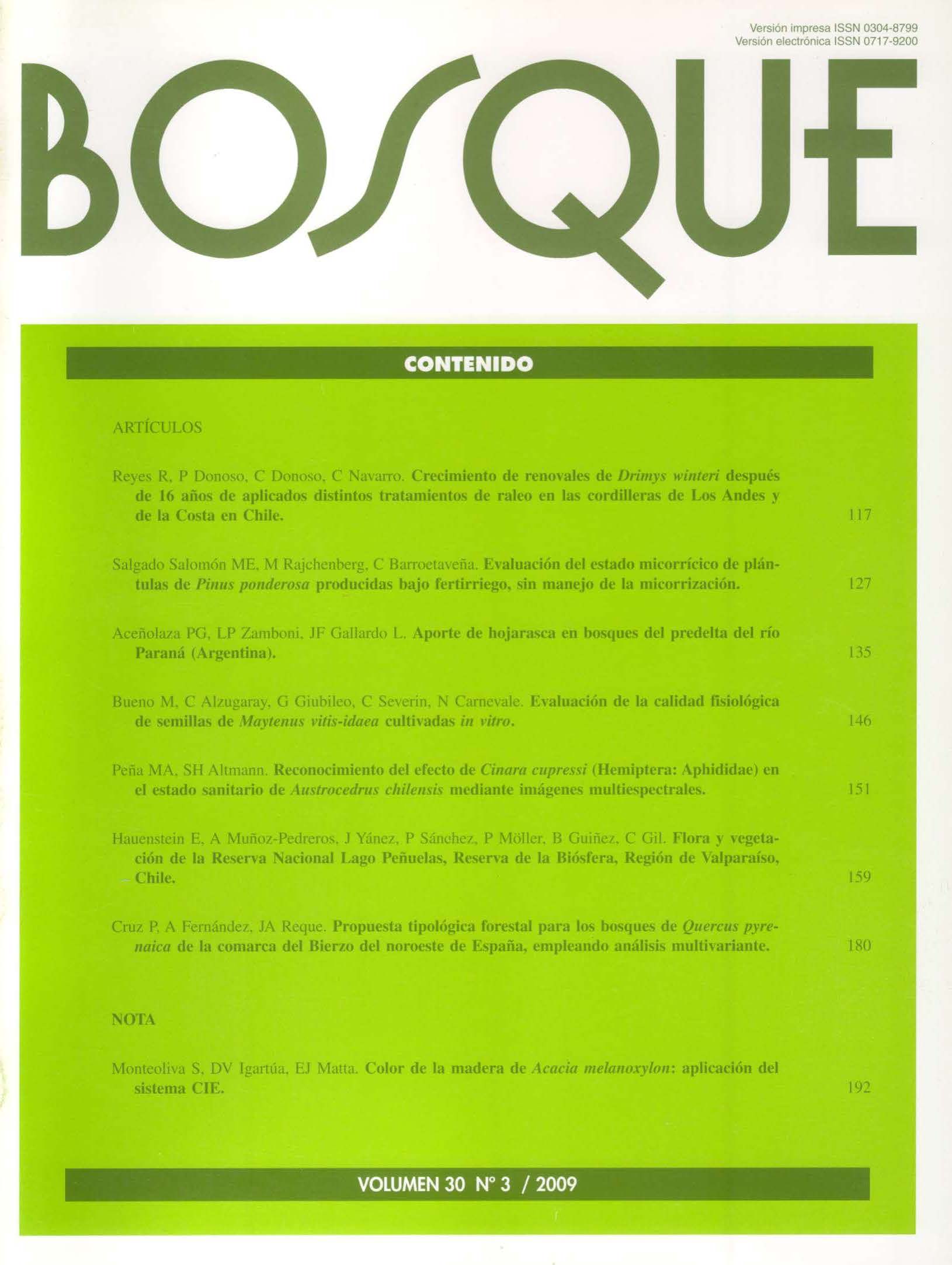Crecimiento de renovales de Drimys winteri después de 16 años de aplicados distintos tratamientos de raleo en las cordilleras de Los Andes y de la Costa en Chile
Contenido principal del artículo
Resumen
Los renovales de Drimys winteri son una de las formaciones boscosas más extensas y productivas del centro sur de Chile. Sin embargo, su manejo ha sido escaso y muchas veces inadecuado debido a la falta de conocimiento silvicultural. En 1986 y 1990 se instalaron ensayos para evaluar el efecto de distintas intensidades de raleo en el crecimiento de renovales de D. winteri de 28 años de edad en la cordillera de la Costa (Hueicoya, provincia de Ranco, 40° 09’ S) y en la Cordillera de Los Andes (Lenca A y B, provincia de Llanquihue, 41° 30’ S). Después de 16 y 10 años de evaluación, respectivamente, se observaron diferencias entre los tratamientos de cada ensayo y entre ensayos. En Hueicoya con raleo a espaciamiento de 3 m se presentaron los mejores resultados en productividad. En Lenca A la alta mortalidad producida por el viento con raleo a espaciamientos de 3 y 4 m hizo que el tratamiento mejor evaluado fuera el testigo. En Lenca B, el raleo a espaciamiento de 2,5 m no produjo diferencias significativas en relación al testigo. A igual intensidad de raleo la respuesta de los renovales en los distintos ensayos fue distinta. Aspectos como calidad de sitio, composición residual, exposición al viento y características del enraizamiento parecen haber influido en este resultado. En general, sería recomendable trabajar con densidades relativas residuales entre 25 y 45% (2 a 3 metros de espaciamiento entre árboles), dependiendo de la vulnerabilidad al viento.

